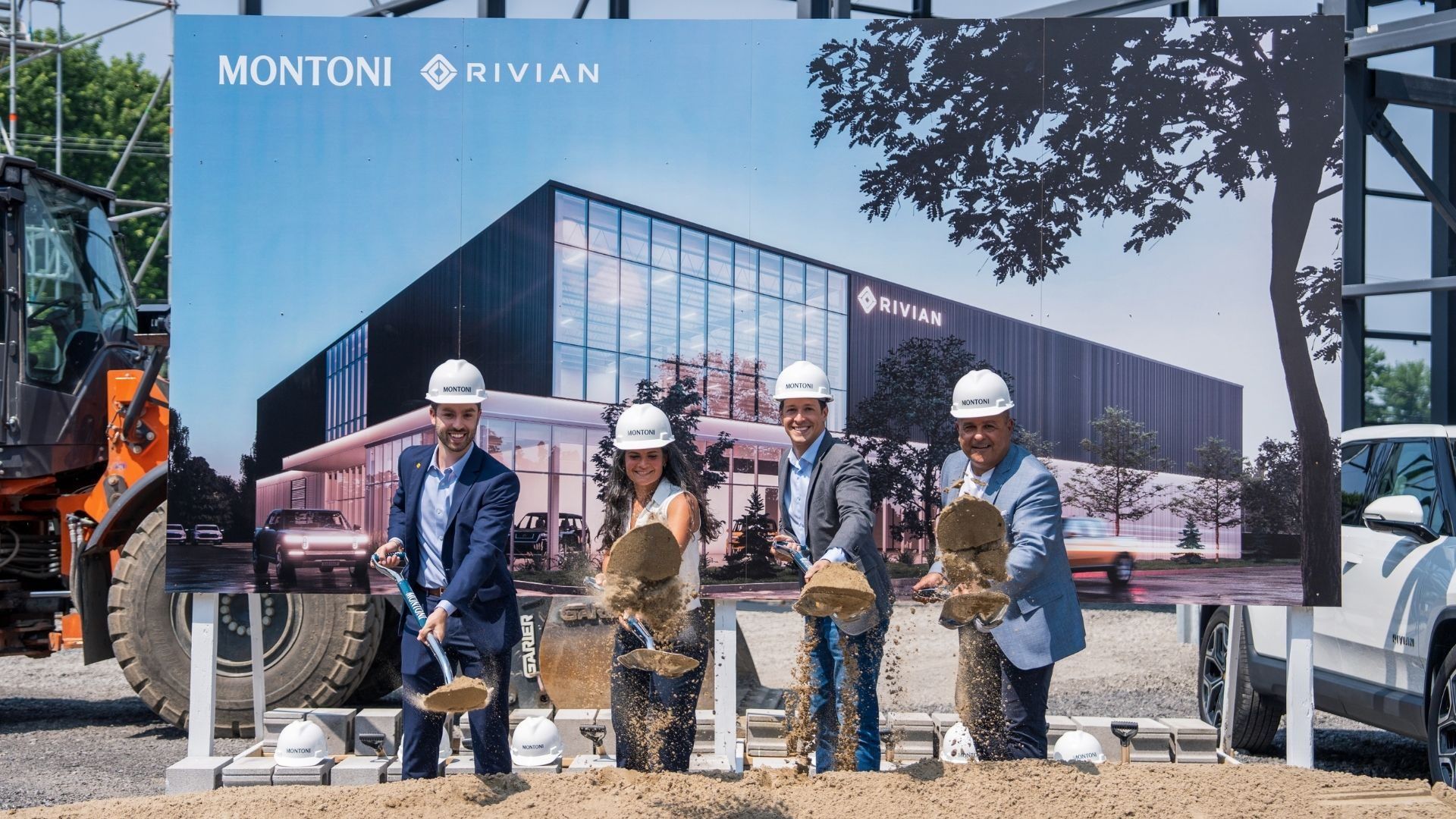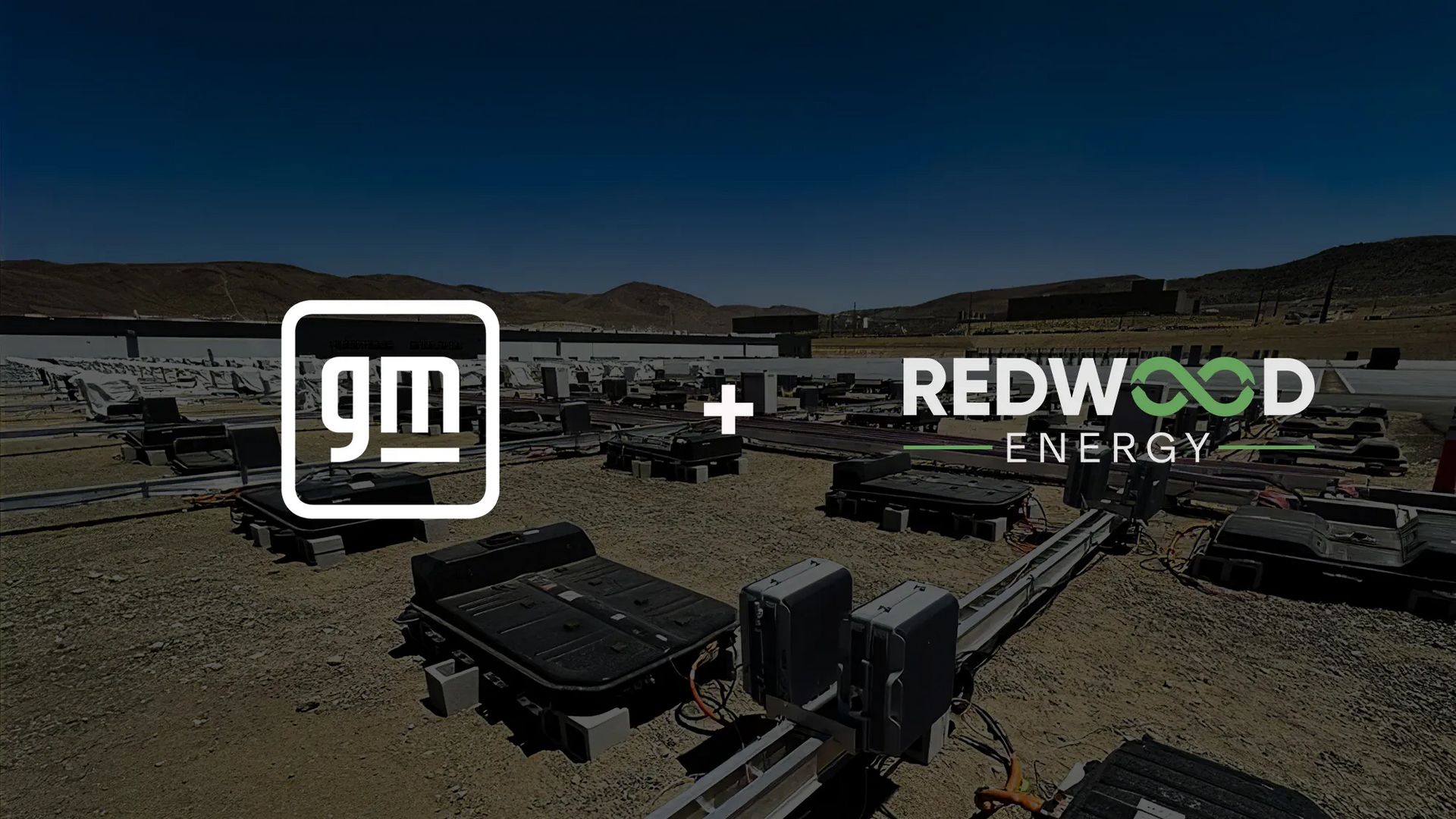- The EV North Newsletter
- Posts
- ⚡🚗EV North Newsletter
⚡🚗EV North Newsletter
July 25th, 2025 - Issue #168

Hello! Thank you for checking out this week’s EV North Newsletter! Tonight is a special night because you’re getting this issue of the EV North Newsletter and The EV Fast Five! Just in time for the weekend so that you can be the EV person for your friends, family and curious neighbours!
Welcome to The EV North - a weekly newsletter that brings together some of the biggest EV news stories and delivers them to your inbox. There is a focus on Canada & North America but you’ll also find EV news from around the world!
Also, be sure to check us out on X / Twitter and LinkedIn!
In this issue:
Dealers Can Now Claim Unpaid EV Rebates Until August 11.
Rivian Breaks Ground on New Québec Service Centre in Laval.
Newfoundland and Labrador Expands EV Fast Charging Network with 10 New Stations.
Tesla Diner Opens in Hollywood: Eat, Charge, and Watch 24/7.
GM and Redwood Partner to Advance U.S.-Made Battery Storage Solutions.
Tesla Releases Q2 2025 Earning Report.
+ more!
Canada
Dealers Can Now Claim Unpaid EV Rebates Until August 11.
Canadian EV dealerships that advanced federal rebates to customers out-of-pocket after the iZEV program was paused can now submit reimbursement claims through a temporary ZEV portal which is open until August 11.
The Incentives for Zero-Emission Vehicles (iZEV) program, which offered up to $5,000 off eligible EVs, was unexpectedly suspended in January 2025 after nearly $3 billion in funding ran out. Despite a brief government notice warning of low funds, many dealerships continued processing sales assuming they’d still be reimbursed. An estimated $11 million in rebates were advanced to customers but left unpaid.
To address this, Transport Canada has reopened its ZEV claims portal. Dealers, automakers, and authorized sellers can now submit outstanding claims for vehicles delivered between April 1, 2024, and January 12, 2025, so long as the rebate was already applied to the sale and all program eligibility requirements are met. Each participant may submit up to 25 claims per day.
The suspension of federal incentives significantly impacted the market. EVs made up 18.29% of all new vehicle sales in Q4 2024, but that share fell to just 8.7% in Q1 2025, according to Statistics Canada. Industry groups have raised concerns that the pause in rebates could slow EV adoption nationwide, especially as affordability remains a key concern.
The federal government has indicated that a new rebate program is in the works, but no official details have been shared yet.
Are you on Reddit? Check out our subreddit at https://reddit.com/r/evcanada
Rivian Breaks Ground on New Québec Service Centre in Laval.
Rivian has officially started construction on a new service centre in Laval, Québec, as part of its expanding Canadian footprint. Developed in partnership with Montoni Group, the project was launched during a ceremony attended by Laval Mayor Stéphane Boyer and represents Rivian’s move from its temporary location in Town of Mount Royal to a permanent, strategically located facility.

City representatives, Montoni group representatives and Rivian representatives play in the dirt at their new site in Laval Quebec, as construciton begins. Image Source: Montoni Group
The new service centre is designed to meet the needs of Québec EV drivers by offering convenient access to maintenance, delivery and demo services. With over 28,000 square feet of space, the centre will be built using local expertise and aims to achieve LEED v4 certification through the use of low carbon materials, on site charging stations and sustainable landscaping.
“Our ambition is to build locally, here in Québec, with partners who engage with our vision of respect for the environment and innovation. This project illustrates a commitment that we share with Rivian: to do better for our customers and for the planet. We are proud to be creating, with this project, a space that reflects that sincere approach.”
This expansion aligns with Rivian’s upcoming launch of the R2 compact SUV in Canada in 2026. The Laval location is part of a broader strategy that includes both physical service hubs and mobile service units to support customers across the country.
The collaboration with Montoni highlights a shared focus on environmental responsibility and local economic development. The project is expected to create long term jobs and contribute to Québec’s clean mobility infrastructure.
Newfoundland and Labrador Expands EV Fast Charging Network with 10 New Stations.
Newfoundland and Labrador Hydro is expanding its public fast charging network with 10 new ultra fast EV chargers at six sites along the Trans Canada Highway. The move comes in response to a 40 percent increase in charger usage in 2024, reflecting the province's rising electric vehicle adoption.
According to NL Hydro’s 2024 annual report, more than 118,000 charging sessions delivered 476 megawatt hours of electricity, which is enough to power EVs for over 2.3 million kilometers. That represents an 81 percent increase in energy delivered compared to the previous year.
The new chargers will offer speeds between 175 and 350 kilowatts, significantly improving turnaround time for drivers. Currently, NL Hydro operates 23 public fast charging stations and has 21 EVs in its fleet.
EV registrations are also climbing. In 2024, NL Hydro administered more than 730 provincial rebates and over 100 federal commercial charger rebates. The province now has at least 4,149 battery electric vehicles and 16,054 plug in hybrids on the road, reaching a combined market share of 10.2 percent.
While most public chargers are located in the Avalon Peninsula, usage is highest along the Trans Canada Highway. One of the new ultra fast chargers is confirmed for Conne River, with additional locations to be announced soon.
👋 Hello, one quick thing. If you’re enjoying this, can you do me a favour and forward it to a friend? Thank you!
EV Around the World 🌏
Tesla Diner Opens in Hollywood: Eat, Charge, and Watch 24/7.
Tesla has opened its first-ever Diner in West Hollywood, California, a unique destination where EV drivers can charge their vehicles, grab a bite to eat, and enjoy entertainment around the clock. Located at 7001 Santa Monica Blvd along the historic Route 66, the Tesla Diner combines a 250-seat restaurant, drive-in movie experience, and a massive EV charging hub.
With 80 V4 Supercharger stalls available to all NACS-compatible electric vehicles, this is now the largest urban Supercharging station in the world. Solar canopies above the west charging lot help reduce the site's carbon emissions by approximately 12 million kilograms of CO2 annually.
The two-story facility offers 24/7 dining and includes a rooftop “Skypad” for enjoying city views and two 20-meter LED megascreens. Guests can watch featured films from inside the diner or their vehicle using the Tesla Diner app. Orders can be placed in advance through the Tesla touchscreen or on arrival.
The menu takes inspiration from classic American diners and includes high-quality comfort food, available for dine-in or in-car delivery. Check out the menu here, which is supposedly sourced locally.
Exclusive Tesla Diner merchandise is also available on-site while supplies last.
GM and Redwood Partner to Advance U.S.-Made Battery Storage Solutions.
Redwood Materials and General Motors have signed a non-binding memorandum of understanding to expand the use of GM’s U.S.-manufactured batteries and repurposed EV battery packs in energy storage systems. The initiative aims to accelerate the deployment of grid-scale storage using both new and second-life battery technologies.
The partnership builds on an existing relationship between the two companies and aligns with the growing demand for resilient energy infrastructure in the United States. With electricity consumption rising, specifically due to the growth of AI data centers, scalable, domestic energy storage has become increasingly important.

Image Source: Redwood Materials
In June, Redwood launched Redwood Energy, a new business focused on deploying both new battery modules and repurposed EV packs in fast, affordable energy storage systems. These systems are designed to support high-demand applications, including AI and industrial electrification. The agreement with GM enables Redwood to integrate second-life GM EV batteries and new U.S.-built cells into its storage platforms.
One example already in operation is Redwood’s 12MW/63MWh second-life battery installation in Sparks, Nevada, which helps power a major AI infrastructure facility run by Crusoe. It is currently the largest project of its kind in North America.
According to JB Straubel, founder and CEO of Redwood Materials, both new and reused GM battery packs will play a key role in meeting growing energy demands while supporting domestic manufacturing and energy independence.
As AI-driven workloads continue to rise, U.S. data centers are projected to increase their share of national electricity use from 4.4% in 2023 to 12% by 2028. GM and Redwood plan to release further details about their joint energy storage initiatives later in 2025.
Do you enjoy one or all of the following?
Learning about EVs?
Deep dives on EVs and the EV industry as a whole?
An email with character and humour?
Someone else connecting the EV dots so you don’t have to?
Then The EV Wire is the place for you! Check it out below:
|
Tesla Releases Q2 2025 Earning Report.
Ony July 23rd, 2025, Tesla released their Q2 2025 Earnings Report and also had an investor call related to the earnings and future operations.
Here is a summary of the published document:
Financial Performance:
Total Revenue: $22.5 billion, down 12% year-over-year, primarily due to lower vehicle deliveries, reduced average selling prices (ASP), and lower regulatory credit revenue.
Net Income:
GAAP: $1.2 billion
Non-GAAP: $1.4 billion
Operating Income: $0.9 billion (down 42% YoY), with a 4.1% operating margin.
Free Cash Flow: $146 million, significantly reduced from prior quarters due to capital expenditures of $2.4 billion.
Cash & Investments: $36.8 billion, down $0.2 billion from Q1.
Key Operational Updates:
Robotaxi Launch: Tesla launched its first Robotaxi service in Austin in June and achieved its first autonomous customer vehicle delivery.
New Affordable Model: Initial builds of a more affordable EV began in June, with volume production expected in the second half of 2025.
Energy Business: Energy storage deployments set a 12th consecutive quarterly record. Tesla began shipping Megapacks from its Shanghai Megafactory.
Vehicle Deliveries:
Total: 384,122 (down 13% YoY)
Model 3/Y: 373,728
Other Models: 10,394
Global Inventory: Increased to 24 days of supply.
Technology and Product Development:
AI & Autonomy: Expanded AI training compute to 67,000 H100-equivalent GPUs. Robotaxi app launched, integrating ride-hailing into the Tesla mobile app.
Battery & Manufacturing: Domestic lithium refining and cathode production remain on track for 2025. First LFP cell production for energy products is expected later this year.
Energy and Services:
Energy Generation & Storage Revenue: $2.8 billion (down 7% YoY)
Energy Gross Profit: Reached a record $846 million.
Supercharging Network: Expanded to over 70,000 connectors, up 18% YoY.
AI Integration in Customer Support: Tesla is using AI agents to assist with orders and service inquiries, enhancing customer experience and technician workflows.
Global Expansion:
APAC: Record deliveries in South Korea, Malaysia, the Philippines, and Singapore; Model Y launched in India.
Europe: Model Y was the best-selling vehicle in multiple countries; regulatory approvals for FSD (Supervised) pending.
U.S.: New Long Range RWD Model Y introduced under $45,000 before incentives.
Outlook:
Tesla remains focused on:
Scaling autonomy software and fleet usage.
Launching the more affordable model and the Cybercab (Robotaxi) in 2026.
Growing the Energy segment.
Maintaining financial discipline amid macroeconomic uncertainties, tariffs, and policy changes.
You can review the document HERE.
Or check out the call here:
QuickEV
EV Tweet of the Week
Today, I'm proud to share a special moment with you. NIO's 800,000th mass-produced vehicle has just rolled off the line at NIO Factory One (NIO F1) in Hefei. To every NIO, ONVO, and firefly user, thank you for your continued trust and support.👏
800,000 may not seem like a big
— William Li (@WilliamLiNIO)
3:52 AM • Jul 24, 2025
